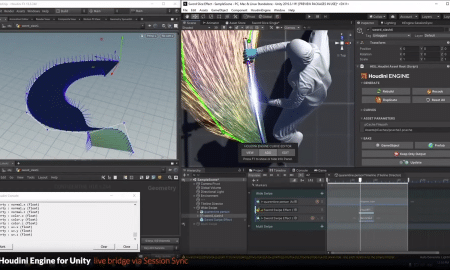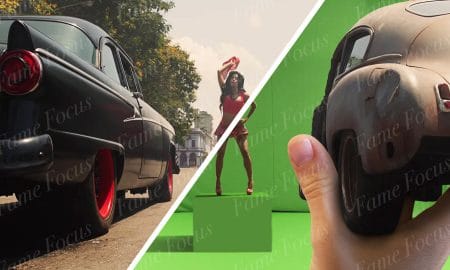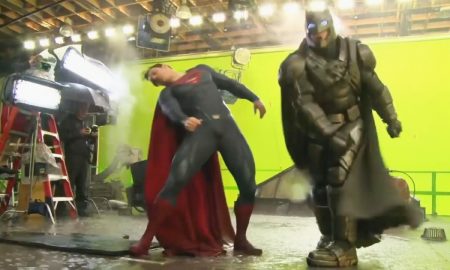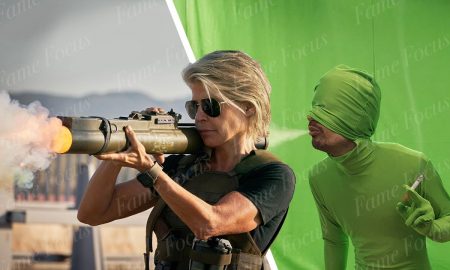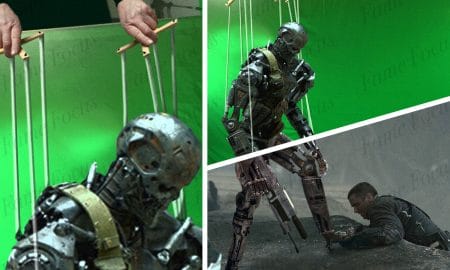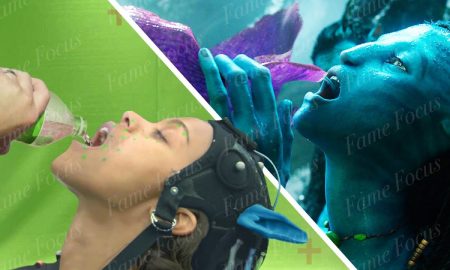In their efforts to recreate the ISS in the utmost detail, Evans and a team of artists in India began with a basic model of the station. From there, the model was split into individual assets. At that point, Evans and his team waited to see where director Daniel Espinosa would point his camera before focusing their effort into the most prominently featured parts of the model.
One of the tricky things they had to deal with was how clean the actual ISS is in real life. Looking at reference photography, it all looked quite CG – the normal trick to break this up would be to add layers of dirt to the object but they wanted to try their best to stay true to real-life so they erred away from dirt where they could and went crazy with things like bolts, rivets, handles, cloth – basically anything that helped to add more texture onto otherwise pretty flat panels. They did, however, finally have to succumb and run a little dirt through which did actually help sell that last 2% of making something feel real.
Another aspect of recreating the real-world ISS that cropped up was the literal mix-and-match nature of the station. Different modules of the International Space Station were built in different nations, by different teams of people. Huw Evans and his team went to great pains to ensure those structural differences were preserved for the final film.
The planet Earth was all CGI too. As you might imagine, a special effects company like Doubled Negative has plenty of reason to have an in-house CG model of the planet Earth. And, According to Evans, the regularly-updated model can accurately portray the Earth from any angle. It rotates, it displays city lights and floating clouds. And that’s just the base model.
But Earth and the space station weren’t the only things they used CGI Models for.
For a moment when Russian actor Olga Dykhovichnaya’s character takes a walk in space, this was done entirely by computers. As Evans explained, Dykhovichnaya submitted to a scan of her entire body to render a 3D model. From there, a team of artists in London went to work, adding details to the final version.
Throughout the film, we see Jake Gyllenhaal, and crew., float through the International Space Station in zero gravity.
There are many ways to achieve this effect. You could film in a ‘Vomit Comet’, but this is a very expensive method.
You could have two guys in green costumes carry the actors in their arms in front of a green screen backdrop and then chroma key the background. But that would be a ridiculous idea. (3:15)
No, Instead, for ‘Life’ they opted to use wires to suspend the film’s actors. It’s a cost-effective technique that allows the filmmakers to film reliably (and predictably) for long periods. Of course, on the tail end of things, Evans and his team tackled the detail-intensive work of scrubbing out every trace of the wires. Imagine the artistry involved in erasing a steel cable that happens to splice Jake Gyllenhaal’s face in two on-screen and removing it so cleanly that no one can tell the difference even when the image is blown up to the size of a movie screen. Maybe option two would have been a better idea after all…
Moving on to the film’s big bad alien named Calvin
Calvin gets a lot of character growth over the course of ‘Life’. Like, literal character growth. He begins as a tiny organism and evolves quickly to a freaky predator. Evans and Espinosa accomplished this feat by splitting Calvin’s development into seven distinct parts: Petri dish Calvin, Finger-following tadpole Calvin, Finger-hugging baby Calvin, Hand-crushing flower Calvin, Mouth-erupting larger Calvin, Adult Calvin, and Final evolution stage Calvin.
Now, every studio wants to deliver on a terrifying movie monster, but creature supervisor Aharon Bourland had something a little more intensive in mind. According to Evans, Bourland wanted her monster to be based in reality. Says Evans, Bourland worked up a whole biology for this creature and tried to base it all on real-world references as much as possible so each part of its design had a function. And it really paid off.
Which movie VFX would you like us to breakdown next? Let us know in the comment section. Also, don’t forget to like, subscribe and turn on notifications to receive updates on our latest videos.
Like the music in this video?
Music By: Monkey Media
Song Title:
Links:
Get it on Google Play:
https://play.google.com/store/music/album/Monkey_Media_Monkey?id=Bowcdm4d3e27oxtldklnn7ynwju&hl=en_US
Get it on itunes:
https://itunes.apple.com/us/album/monkey/1457690282
Listen on Spotify:
Buy it on Amazon:
https://www.amazon.com/Monkey-Media/dp/B07NRQCQ7Y/ref=sr_1_2?keywords=monkey+media&qid=1554364061&s=gateway&sr=8-2
More in VFX
-
Amazing “Free Guy” VFX Breakdown
Whilst putting together our latest Breakdown of the VFX used in 20 Century Studio’s “Free Guy”, we interviewed Digital Domain’s VFX...
February 24, 2022 -
All You Need to Know About VFX Software and How to Get Started Right Now
ActionVFX is running a sale! Get your industry-leading VFX stock footage at 25% off, and get the AVFX Drive for 50%...
July 24, 2021 -
Amazing Before & After Hollywood VFX The Fate of the Furious
The Fate of the Furious marks the first instalment in the franchise since The Fast and the Furious: Tokyo Drift (2006)...
March 27, 2020 -
Amazing Before & After Hollywood VFX 2
According to Atomic Fiction’s VFX supervisor Ryan Tudhope, there wasn’t a huge budget for making the first Deadpool movie so they...
March 15, 2020 -
Amazing Before & After Hollywood VFX – Terminator Dark Fate
The Terminator saga continues with Dark Fate and now we take a look at some of the complex CGI behind the...
March 14, 2020 -
Amazing Before & After Hollywood VFX Avatar
Wait, in Avatar there were real actors? CGI artists are never just left to blindly animate characters and in most cases...
March 13, 2020


